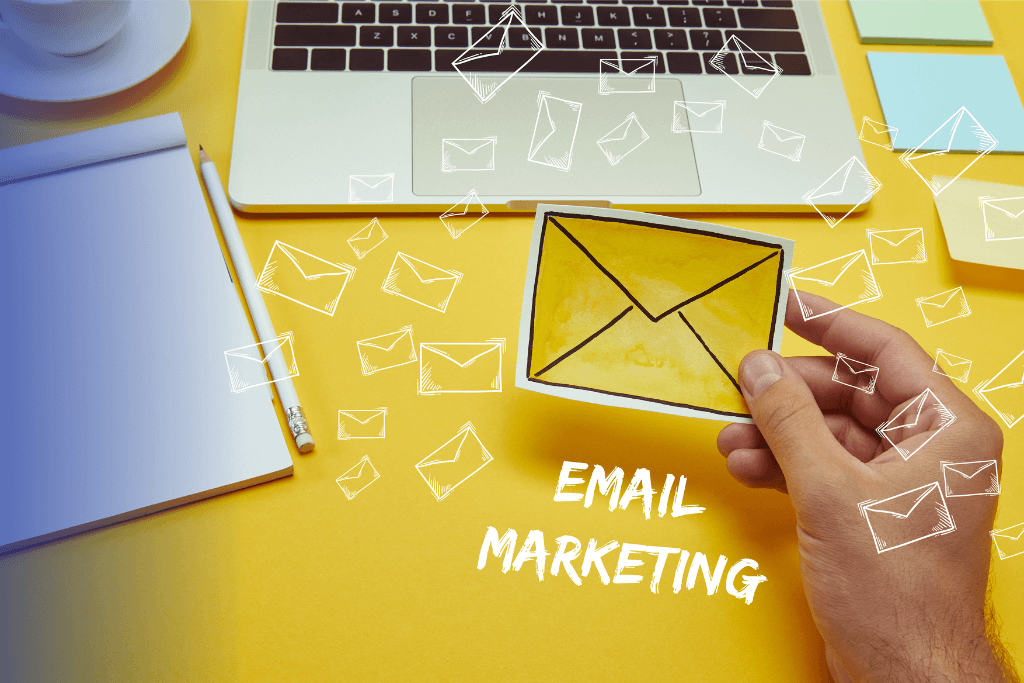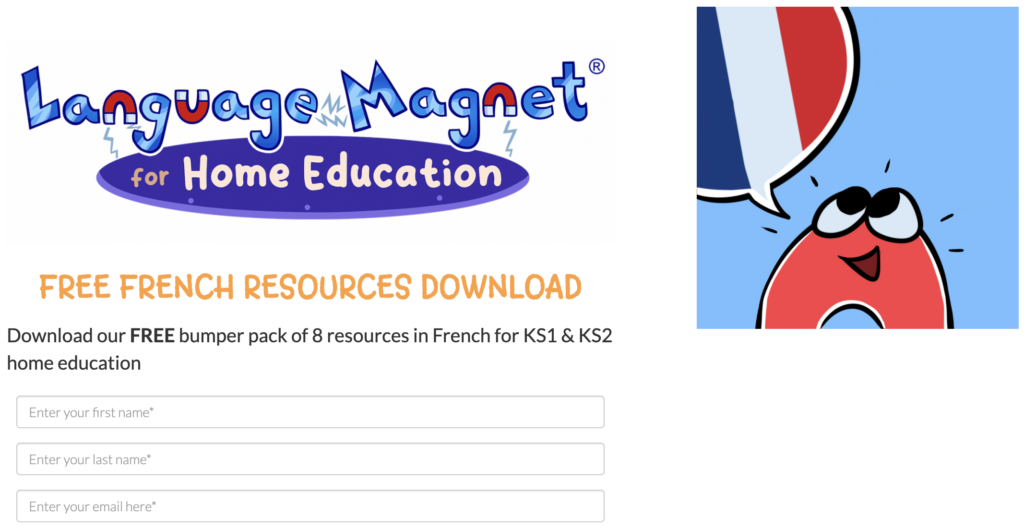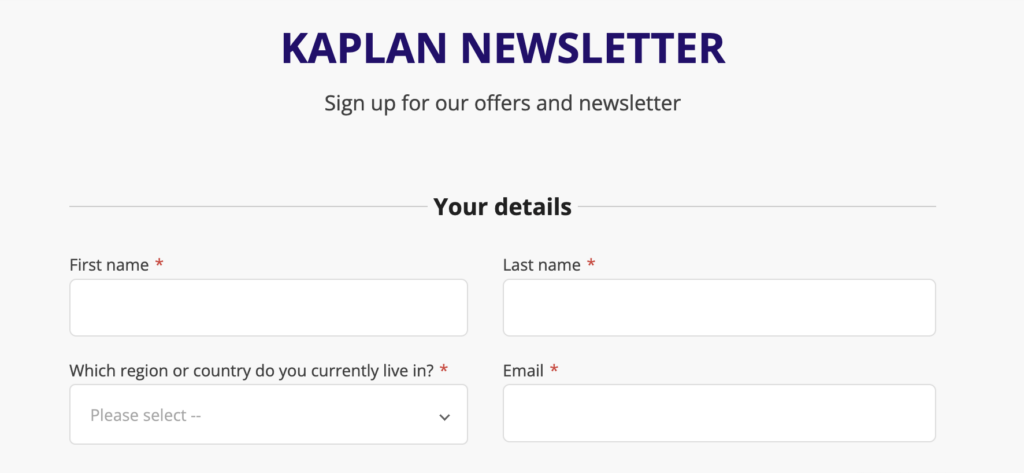
Email marketing in a language school is today one of the most effective forms of sales support, but not only that. Thoughtful use of a valuable contact list is also an excellent way to maintain relationships with potential and former clients. Surely, you’ve wondered more than once about how to effectively acquire their email addresses? In the following article, you will find effective methods for building a mailing list.
What will you find in this article?
- Email marketing in a language school – why is it worth investing in it?
- How to build a mailing list step by step?
- Best practices for email marketing in a language school
- Summary – email marketing in a language school
Email marketing in a language school – why is it worth investing in it?
Email marketing is one of the most effective communication channels for language schools. Unlike social media, where organic reach is declining, or Google and Meta ads, which are becoming increasingly expensive, email marketing provides language schools with direct and uninterrupted access to potential and current students.
Important!
A key advantage of email marketing is that it allows for regular contact with individuals who have already shown interest in the school’s offerings. The decision to start a language course often takes weeks or months to mature—potential students consider financial, logistical, and time-related factors. Email marketing allows you to accompany them on this decision-making journey, and regularly reminding them of your presence through valuable messages is truly invaluable.
What do you gain by incorporating email marketing into your language school’s marketing strategy?
✔︎ Building long-term relationships with potential and current students
Email marketing enables a language school to maintain contact with individuals who have not yet decided to take a course, as well as with current students. By delivering valuable content, the school builds credibility and trust, which is particularly important in the language education industry.
✔︎ Personalized communication
Modern email marketing tools allow for advanced segmentation of the recipient list. A language school can divide its database based on:
- language proficiency level,
- age of students (children, teenagers, adults, seniors),
- preferred language,
- decision-making stage (new lead, post-consultation individual, former student),
- purchase history.
This allows for the delivery of content perfectly tailored to the needs and interests of the recipient. An individual interested in a business course will receive different materials than a parent considering enrolling their child in classes. This personalization significantly enhances the effectiveness of communication.
✔︎ Sales process automation
Email marketing allows the creation of automated message sequences (known as paths) that guide the recipient through the entire decision-making process.
For a language school, such a sequence might look like this:
- Welcome message with free material (e.g., an e-book „10 Ways to Learn a Language Effectively„),
- Educational email about the most common mistakes in language learning,
- Message presenting the school’s teaching methodology,
- Email with success stories of course graduates,
- Proposal for a free trial lesson,
- Detailed presentation of the offer with a time-limited discount.
With such a sequence, you capture the curiosity of a potential student and gradually lead them to the decision to purchase a course, while simultaneously providing valuable and substantive content.
✔︎ Campaign results tracking
Email marketing allows you to measure open rates, click-through rates, and conversion rates, which facilitates the optimization of activities.
Did you know?
With LangLion, you can send mailings directly from the system to students, parents, teachers, and administrators. But that’s not all! Thanks to our integration with MailerLite, you gain access to advanced email campaigns, audience segmentation, performance tracking, and many other options!
How to build a mailing list in a language school step by step?
Before we answer this question, remember two important rules!
Rule 1.
According to GDPR regulations, everyone on your mailing list must consent to receiving messages. Additionally:
✔︎ Every email should include an option to unsubscribe from the mailing list.
✔︎ Students’ data should be protected from third-party access.
✔︎ People signing up for your newsletter should receive clear information about what data you collect and how you use it.
Rule 2.
Building an email list is a continuous process that requires regular actions and attention to the quality of the database. It can provide you with a steady influx of new students at relatively low costs, provided you act systematically!
So how do you effectively build a mailing list in a language school? Here are proven methods!
Step 1: Create a valuable incentive (lead magnet)
The first step in building an email list is preparing a valuable incentive that will encourage visitors to your school’s website to leave their email address. In the context of a language school, this might be, for example:
- An email mini-course (e.g., „7 Days with English Idioms”)
- An e-book with language exercises
- An online leveling test with a personalized report
- A set of flashcards for vocabulary learning
Language school LanguageMagnet offers various lead magnets to effectively build their mailing list and engage potential students.

These steps, when implemented correctly, can significantly enhance your school’s communication strategy and help you reach a broader audience effectively and efficiently.
Key is that this incentive is truly valuable and solves a real problem or fulfills a need for the potential student. The better it is tailored to the audience’s needs, the higher the chance for conversion. An invaluable aid in its preparation will be knowledge of the target group and creating personas.
Step 2. Place newsletter signup forms on the website
After preparing the lead magnet, you should place newsletter signup forms in strategic locations on the school’s website. It is important that the forms are simple – the more fields to fill out, the lower the conversion rate. At the initial stage, it is enough to collect just the name and email address. Additional information can be obtained in later communication.

Step 3. Use social media
Social media (if you use it) is an excellent tool for promoting lead magnets and building an email list. You can, for example:
- promote free materials by posting regularly,
- launch paid advertising campaigns directing to a page with a form,
- organize informative webinars requiring email registration.
Step 4. Engage during offline events
Traditional methods of collecting contacts also remain effective, especially for schools operating locally. Events such as open days, educational fairs, or language workshops are great opportunities to expand your base with more people interested in your school.
Remember, in this case, too, it is important to clearly communicate the benefits of signing up for the list and obtain appropriate marketing consent.
Step 5. Redirect to a landing page
A landing page is the target page that a user lands on after clicking a link or advertisement. This page differs from a regular website in that it conveys only one piece of information, such as an offer for a new language course, a discount coupon, or the option to download an e-book for free.
The most important aspect is that your goal is to lead the user to take a specific action (purchase a course, download a book, register for a training session). Remember, the landing page should be targeted at a specific audience and focus on one action to efficiently close the sales process.
Best practices for email marketing in a language school
To conclude, read the list of best practices that will help you build an effective email marketing strategy in a language school.
- Personalization – segment your audience and tailor content to their course history.
- Clear message objective – every message should have a distinct purpose, such as enrolling in a new course or reminding about a promotion.
- Conciseness and readability – avoid lengthy messages, use headers and bullet points.
- Engaging email subject – the subject should be captivating and encourage the recipient to open the email.
- Call to action (CTA) – every message should contain a clear call to action (e.g., „Enroll in a course” or „Download a free e-book”).
- Mobile optimization – most users check emails on smartphones, so messages need to be responsive.
- Testing and analyzing results – evaluate which messages work best and optimize campaigns accordingly.
There is no single effective recipe for building a list of valuable contacts. However, one thing is certain – you should try, test, and combine different methods.
Summary – email marketing in a language school
E-mail marketing is a powerful tool for language schools that helps build relationships with students, increase enrollments, and enhance customer loyalty.
The key to success is legally and effectively building a contact database, personalizing content, and adhering to GDPR regulations. It’s important to regularly analyze the effectiveness of campaigns and adjust strategy according to audience expectations. If you haven’t yet utilized e-mail marketing in your school – now is the best time to change that!
Want to expand your marketing efforts in your language school? Download the free e-book: independent audit of language school marketing!
